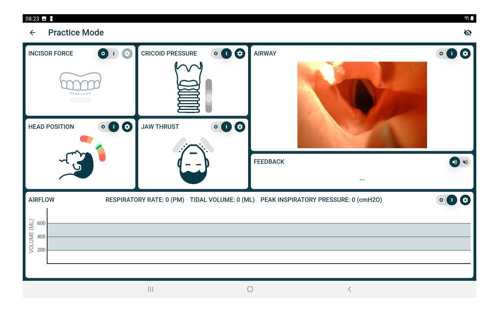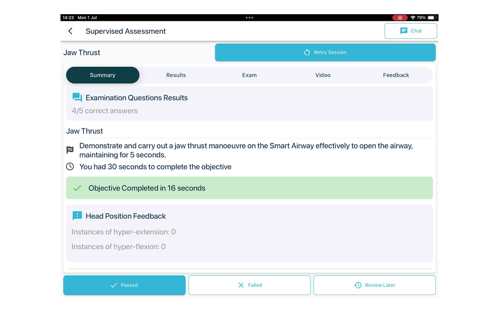TruCorp's Smart Airway range now includes a Child model for sensor driven pediatric airway management training.
This essential tool for healthcare professionals supports a wide range of pediatric airway management techniques, such as endotracheal intubation and bag-valve-mask (BVM), with data-driven feedback.
With live performance data via the Smart Airway app, trainees are able to immediately assess their technique and adjust where required.
What are the benefits to using Smart Airway Child in pediatric airway management training?
The Smart Airway app can be downloaded to a tablet, and has 3 unique training and assessment modes.
Practice Mode

Practice Mode gives users real-time feedback on their actions during procedures. Noting responses (to metrics like head positioning and incisor force) allows for identification of accuracy & inconsistencies, giving the user the opportunity to adjust techniques during practice sessions.
The model's camera allows for the visualization of internal landmarks, and the dashboard shows lung volumes and ventilation metrics, to give true-to-life values.
Self-Directed Assessment

Self-directed Assessment, or self-paced learning, contains tutorials on skills & techniques, assessments that can be customized for specific competency focus, with scoring & performance benchmarking.
With its timestamped video debriefing and detailed feedback, users can gain insights into where they would benefit from additional practice. This mode also allows for performance tracking over time to monitor progression.
Instructor Led Assessment

Instructor Led Assessment mode allows the user to set knowledge tests to assess theoretical understanding, and then build custom scenarios, and tailor them to different levels of expertise.
Performance tracking and quantitative metrics aid in directing focused training where it's needed most and gives feedback with official certificates and progress documents.
TruCorp's Smart Airway range now includes a Child model for sensor driven pediatric airway management training.
This essential tool for healthcare professionals supports a wide range of pediatric airway management techniques, such as endotracheal intubation and bag-valve-mask (BVM), with data-driven feedback.
With live performance data via the Smart Airway app, trainees are able to immediately assess their technique and adjust where required.
What are the benefits to using Smart Airway Child in pediatric airway management training?
The Smart Airway app can be downloaded to a tablet, and has 3 unique training and assessment modes.
Practice Mode

Practice Mode gives users real-time feedback on their actions during procedures. Noting responses (to metrics like head positioning and incisor force) allows for identification of accuracy & inconsistencies, giving the user the opportunity to adjust techniques during practice sessions.
The model's camera allows for the visualization of internal landmarks, and the dashboard shows lung volumes and ventilation metrics, to give true-to-life values.
Self-Directed Assessment

Self-directed Assessment, or self-paced learning, contains tutorials on skills & techniques, assessments that can be customized for specific competency focus, with scoring & performance benchmarking.
With its timestamped video debriefing and detailed feedback, users can gain insights into where they would benefit from additional practice. This mode also allows for performance tracking over time to monitor progression.
Instructor Led Assessment

Instructor Led Assessment mode allows the user to set knowledge tests to assess theoretical understanding, and then build custom scenarios, and tailor them to different levels of expertise.
Performance tracking and quantitative metrics aid in directing focused training where it's needed most and gives feedback with official certificates and progress documents.